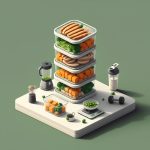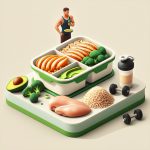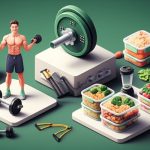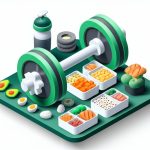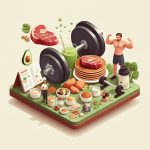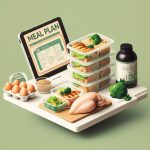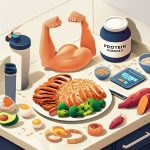Of course. Here is the detailed cluster article, crafted according to your specifications.
The biggest hurdle in a successful bulk isn’t the workout; it’s the fork. Consistently eating enough calories and protein can feel like a full-time job, but the right bulk food recipes transform this chore into a delicious, efficient system for muscle gain. It’s not about force-feeding bland chicken and rice. It’s about cooking smarter, not harder, with meals that are as satisfying to eat as they are effective for growth.
This guide moves beyond single-serving meals to focus on a meal prep strategy. We’ll break down the components of a perfect bulking recipe and provide actionable blueprints you can use this week to pack your fridge with high-calorie, muscle-building fuel.
At a Glance: Your Takeaways
- The Bulking Recipe Formula: Understand the non-negotiable trio of high protein, calorie-dense carbs, and healthy fats that every effective recipe needs.
- Strategic Meal Prep Blueprints: Get specific, high-calorie recipe ideas for one-pot meals, big-batch bakes, and breakfasts that build.
- The “Flavor Factor”: Learn why homemade seasonings and smart cooking techniques are critical for sticking to your plan long-term.
- Maximize Your Time & Budget: Discover how to structure your prep to save hours in the kitchen and make your grocery budget work harder.
- Quick Answers to Common Hurdles: Get solutions for avoiding meal fatigue, adjusting calories, and finding vegetarian options.
The Anatomy of a Perfect Bulking Meal
Before we jump into recipes, let’s establish the ground rules. A successful bulking meal isn’t just big; it’s intelligently constructed. According to research from sources like Legion Athletics, a great bulking recipe is delicious, high in protein, and calorically dense without relying on excessive sugar or heavily processed ingredients.
Every meal you prep should be built on these three pillars:
- High-Quality Protein: This is the non-negotiable foundation for muscle repair and growth. Aim for at least 30-50 grams per meal. This can come from animal sources like beef, chicken thighs, lamb, and eggs, or plant-based sources like lentils, beans, and tofu.
- Calorie-Dense Carbohydrates: Carbs are your primary energy source, fueling intense workouts and replenishing glycogen stores. Focus on complex carbs that provide sustained energy, such as potatoes, rice, oats, whole-wheat pasta, and quinoa.
- Healthy Fats & Micronutrients: Fats are the most calorie-dense macronutrient (9 calories per gram) and are crucial for hormone production. Incorporate sources like avocado, nuts, seeds, olive oil, and fatty fish. Don’t forget fibrous vegetables for digestion and essential vitamins.
A common mistake is focusing only on protein and carbs, leading to meals that are voluminous but not calorically dense enough. Adding a tablespoon of olive oil, a handful of almonds, or half an avocado can easily add 100-200 high-quality calories without making you feel overly stuffed. While these principles apply to every meal, having a structured approach for your midday meal is key to staying consistent. For a deep dive into that specific challenge, our comprehensive guide on Bulking Lunch Recipes provides targeted strategies and ideas.
The Meal Prep Framework: Cook Once, Eat for Days

Effective meal prep is a system. Instead of thinking recipe by recipe, think in components. This approach gives you variety and flexibility, preventing the dreaded flavor fatigue that derails many bulking phases.
Step 1: Anchor Your Week with 2-3 Core Recipes
Don’t try to cook seven different meals. Choose two or three high-calorie recipes you can rotate throughout the week for your main meals. This simplifies your shopping list and your Sunday cooking session.
A great pairing would be a one-pot dish and a baked dish. For example:
- Dish 1: One-Pot Chili Pasta (stovetop, easy cleanup)
- Dish 2: Chicken Alfredo Pasta Bake (oven, largely hands-off)
Step 2: Batch-Cook Your Components
Even if you follow a specific recipe, always cook extra base ingredients. This is the secret to creating quick “freestyle” meals when you run out of pre-portioned containers.
- Proteins: Grill a full pack of chicken thighs, brown 2-3 pounds of ground beef with taco seasoning, or hard-boil a dozen eggs.
- Carbohydrates: Cook a large pot of rice, roast a sheet pan of cubed sweet potatoes, or boil a full box of whole-wheat pasta.
- Vegetables: Roast a large tray of broccoli and bell peppers with olive oil and salt. They hold up well in the fridge and can be added to any meal.
Step 3: Master the “Flavor System”
Bland food is the enemy of a successful bulk. Create a few homemade seasoning blends to keep things interesting. A simple spicy taco seasoning or an Italian-inspired herb mix can completely transform basic ground beef or chicken.
- Example: Homemade Taco Seasoning
- Mix chili powder, cumin, paprika, garlic powder, onion powder, and a pinch of cayenne. It’s healthier and more flavorful than store-bought packets.
High-Calorie Recipe Blueprints You Can Use Now
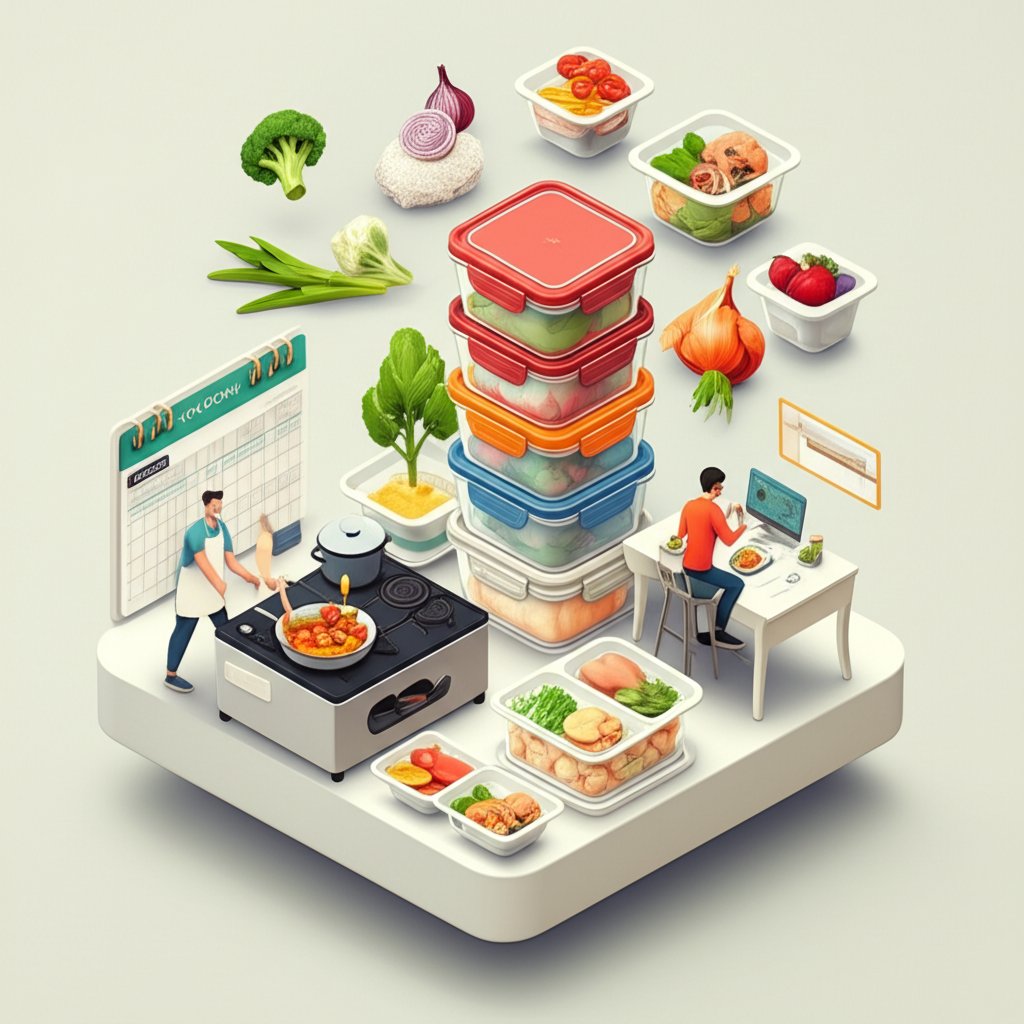
Here are actionable recipe ideas, inspired by proven sources, that are perfect for meal prep. Think of them as templates you can customize.
Blueprint 1: One-Pot Power Meals
These are your best friend for efficiency. Everything cooks in a single pot or pan, minimizing cleanup while maximizing flavor.
- One-Pot Chili Pasta: This staple combines the best of chili and pasta. Ground beef and beans provide the protein, while the pasta cooks directly in the sauce, soaking up all the flavor.
- Macro Snapshot (per serving): ~646 calories, 44g protein, 85g carbs, 15g fat.
- Pro-Tip: Use 90/10 ground beef instead of 93/7 to easily boost the calorie and fat content. Add a dollop of Greek yogurt on top for extra protein and creaminess.
- Beef Teriyaki Noodle Stir-Fry: Ready in under 30 minutes, this dish is a nutrient-packed powerhouse. The homemade teriyaki sauce is a simple mix of soy sauce, honey, ginger, and garlic.
- Pro-Tip: Use flank steak or sirloin for protein. Bulk it up with extra noodles and add a tablespoon of sesame oil at the end for another 120 calories of healthy fats.
Blueprint 2: Big-Batch Bakes & Roasts
Let your oven do the heavy lifting. These recipes are largely hands-off, freeing you up to prep other components.
- Ashanti Chicken (Whole Roasted Chicken with Jollof Rice): This West African-inspired dish is a showstopper. A whole chicken is roasted over a bed of spicy jollof rice, so the rice absorbs all the juices.
- Macro Snapshot (per serving): ~783 calories, 38g protein, 70g carbs, 38g fat.
- Pro-Tip: A whole chicken is one of the most cost-effective ways to get high-quality protein. Once you’ve portioned the meat and rice, use the carcass to make a nutrient-rich bone broth.
- High-Calorie Chicken Alfredo Pasta Bake: A classic comfort food that’s perfect for bulking. Use whole-wheat pasta for more fiber, chicken thighs for more calories and flavor, and a sauce made with whole milk or cream.
- Pro-Tip: Add chopped broccoli for micronutrients and top with extra mozzarella cheese during the last 10 minutes of baking for a golden-brown crust and a significant calorie boost.
Blueprint 3: Breakfasts That Build
Don’t neglect the first meal of the day. A high-calorie, high-protein breakfast sets you up for success.
- Carrot Cake Overnight Oats: This recipe from MealPrepify is a game-changer, packing over 700 calories. Combine rolled oats, shredded carrots, raisins, walnuts, chia seeds, milk, and a scoop of vanilla protein powder. Let it sit overnight.
- Macro Snapshot (per serving): ~700+ calories.
- Pro-Tip: Make 3-4 jars at once. Use whole milk and add a tablespoon of almond butter before serving to push the calorie count even higher.
- Western Hash Brown Omelette: This combines a protein-packed omelette with its own carb source. Sauté ham, onions, and peppers, then pour over your eggs. Serve alongside crispy hash browns.
- Macro Snapshot (per serving): ~474 calories, 28g protein, 26g carbs, 30g fat.
- Pro-Tip: To meal prep this, make a large frittata in a baking dish with all the ingredients. You can cut it into squares for easy grab-and-go portions.
Blueprint 4: Calorie-Dense Shakes & Snacks
Liquid calories are your secret weapon for hitting your daily targets without feeling constantly full.
- The 600-Calorie Banana & Oats Protein Shake: This is the quintessential bulking shake. It’s simple, fast, and effective.
- The Recipe: 1-2 cups whole milk, 2 scoops whey protein, 1 large banana, 1/2 cup rolled oats. Blend until smooth.
- Macro Snapshot: ~602 calories, 59g protein, 73g carbs, 9g fat.
- Pro-Tip: Add a heaping tablespoon of peanut butter for an extra ~190 calories and 8g of protein.
Quick Answers to Common Questions
Getting the food right is often where people stumble. Here are some rapid-fire solutions to common problems.
“Isn’t eating this much food incredibly expensive?”
It can be, but strategic shopping makes a huge difference. Focus on cost-effective staples: whole chickens, ground beef in bulk, large bags of rice and potatoes, and eggs. Cooking at home is always cheaper than buying pre-made meals or eating out. A single homemade pasta bake can provide 4-6 meals for the cost of one takeout order.
“I get bored eating the same thing. How do I keep it interesting?”
Variety is in the seasoning, not always the core ingredient. That batch-cooked chicken can become three different meals:
- Day 1: Chicken with BBQ sauce and roasted sweet potatoes.
- Day 2: Sliced chicken in a creamy cajun pasta.
- Day 3: Shredded chicken with taco seasoning for burrito bowls.
“How do I easily adjust calories up or down without changing the whole recipe?”
This is where “calorie boosters” come in. These are easy additions to increase density.
| To Add ~100-150 Calories | How to Use It |
|---|---|
| 1 Tbsp Olive Oil | Drizzle over pasta, rice, or roasted vegetables. |
| 1/4 Avocado | Add to bowls, salads, or on the side of eggs. |
| 1 oz Mixed Nuts | Toss into salads, oatmeal, or eat as a snack. |
| 2 Tbsp Peanut Butter | Add to shakes, oatmeal, or spread on toast. |
“Can I create effective bulk food recipes if I’m vegetarian or vegan?”
Absolutely. The principles remain the same; only the protein source changes. MyProtein highlights several excellent plant-based options. Focus on calorie-dense plant sources like lentils, chickpeas, tofu, tempeh, and seitan.
- Vegan Example: A one-pot lentil dahl made with full-fat coconut milk is incredibly calorie-dense and high in protein. Serve with a large portion of rice and top with cashews.
- Vegetarian Example: A one-pan halloumi and harissa bake with chickpeas and roasted vegetables is a simple, high-protein, and flavorful option.
Your First Step to a Better Bulk
The key to a sustainable bulk is a system that delivers delicious, high-calorie food without chaining you to the stove every night. It’s about front-loading the work so you can reap the rewards all week long. Stop thinking of it as a diet and start treating it as a project in efficient, satisfying cooking.
Your action plan is simple: Pick just one of the blueprints above—like the One-Pot Chili Pasta—and make a double batch this weekend. That’s it. You’ll have four high-protein, calorie-dense meals ready to go, and you’ll have taken the most important step toward building a better, more effective bulking routine.
- Bulk Food Recipes for Delicious High-Calorie Meal Prep - November 21, 2025
- Quick Easy Bulking Meal Prep for Rapid Muscle Gains - November 20, 2025
- Delicious Lunch Ideas for Bulking to Fuel Your Muscle Gains - November 19, 2025


